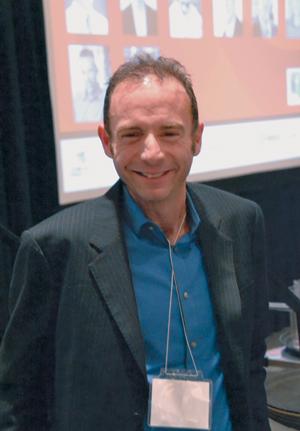Five years ago, Tim Brown was a man with a death sentence – three actually. He was diagnosed with HIV in 1995, leukemia in 2006 and suffered a deadly relapse of leukemia in 2007. With few other options, he submitted himself to a risky experiment that doctors hoped would cure him of both leukemia and HIV. The risk paid off.
Today, Brown has the T-cell count of a healthy man, doctors can’t find the virus anywhere in his body, and he hasn’t taken HIV medication since Feb 2007.
Tim Brown – nicknamed “The Berlin Patient” by the media after the city where he received the experimental procedure – is the first and, currently, only person in the world to have been cured of HIV. And while attempts to recreate Brown’s treatment have thus far been failures, Brown’s HIV-free life is giving hope to researchers around the world who are working on a cure.
Brown was initially reluctant to step into the spotlight after his successful treatment.
“I don’t think I believed it until the New England Journal of Medicine published a report about me in Feb 2009, almost two years after I was cured,” he says. “But I needed to tell my story. By sharing it, I hope to bring some new optimism to the fight against HIV.”
Born and raised in Seattle, Brown had moved to Berlin to study and was living there when he tested positive.
“I was terrified,” he says. “At that point most of us viewed an HIV diagnosis as a death sentence. A cure was not a topic for discussion.”
He went on the early HIV medication AZT right away and started the combination therapies once they became available.
Over the years, Brown came to accept his life as an HIV-positive man. He settled into a happy, monogamous relationship.
Then in 2006, Brown checked into a hospital suffering from fatigue. Though doctors initially thought it wasn’t anything serious, he was quickly diagnosed with acute myelogenous leukemia.
He was put on a chemotherapy routine immediately, but his treating physician, Dr Gero Hütter, saw an opportunity.
Leukemia is a cancer of the bone marrow, which produces red and white blood cells, and can be treated with a bone marrow transplant. Hütter had the idea to treat Brown with a bone marrow transplant from a rare group of people who are genetically immune to HIV.
An estimated one percent of the northern European population carry a genetic mutation that makes their T-cells unable to be attacked by HIV. Essentially, Hütter proposed transplanting the immune system of an HIV-resistant person into Brown, to eliminate both the leukemia and the HIV.
That didn’t work out. The chemotherapy was especially taxing, causing multiple infections and forcing him into an induced coma. When the chemo was finished and his leukemia in remission, he decided not to press his luck. Bone marrow transplants carry a 30-percent mortality rate.
But a year later, the leukemia returned and he decided to give it a shot. Hütter went to work finding an HIV-resistant donor match.
The bone marrow transplant was done via stem cells that were pulled from the donor’s blood and introduced into Brown, in the same way that a blood transfusion is done. But to get Brown’s body to accept the cells, his immune system had to be brought down essentially to zero. He was taken off his HIV medications and put on chemotherapy and full-body radiation.
Brown survived. Over the next months, he was tested regularly, but doctors found no evidence that the HIV had returned to his blood.
Incredibly, a year later, Brown was diagnosed with a second relapse of leukemia and was given another bone marrow transplant. He survived again.
Now his doctors believe he’s been cleared of both HIV and leukemia. But his life is not completely back to normal. The treatments wreaked their own havoc on his body.
“There was a time when my blood platelets were down to one, when a normal rate is about 200. My eyes started to bleed back behind the cornea. I found out that the barrier between the left brain and right brain is broken down,” he says. “I became delirious, I couldn’t walk, I couldn’t move, I was incontinent and I couldn’t clean myself up. I basically had to rely on the nurses and my partner, who was very important in taking care of me.”
“I still have mobility issues that I didn’t have before,” he says.
Brown’s new lease on life has put pressure on him to be an object of hope for millions who are looking for their own cures. He recalls one negative comment on a news article about his cure years ago.
“I guess it kind of sounded in the article like I was basically living like I used to, sexually, and he thought that I shouldn’t do that; I should be thankful for what I had and take care of myself. Now, I’m in a very good monogamous relationship and I’m very happy with that, so it did kind of change my perspective of how I should live my life.”
He says he’s doubtful that he would have been cured if he were living in the US when he received his leukemia diagnosis.
“I don’t think if I had been in the US that I would still be here because the German healthcare system is very good,” he says. “Probably they would have decided against doing something so risky and expensive. I think it cost about 1 million euros to find the donors.”
For now, Brown has taken a new direction in his life as an activist working for a cure. He delivers speeches about his experience to raise hope and awareness.
“I’m sure a cure is going to come for everyone,” he says. “I’m very hopeful that research will go forward to be able to find a cure. Hopefully it won’t be too costly.”


 Why you can trust Xtra
Why you can trust Xtra


